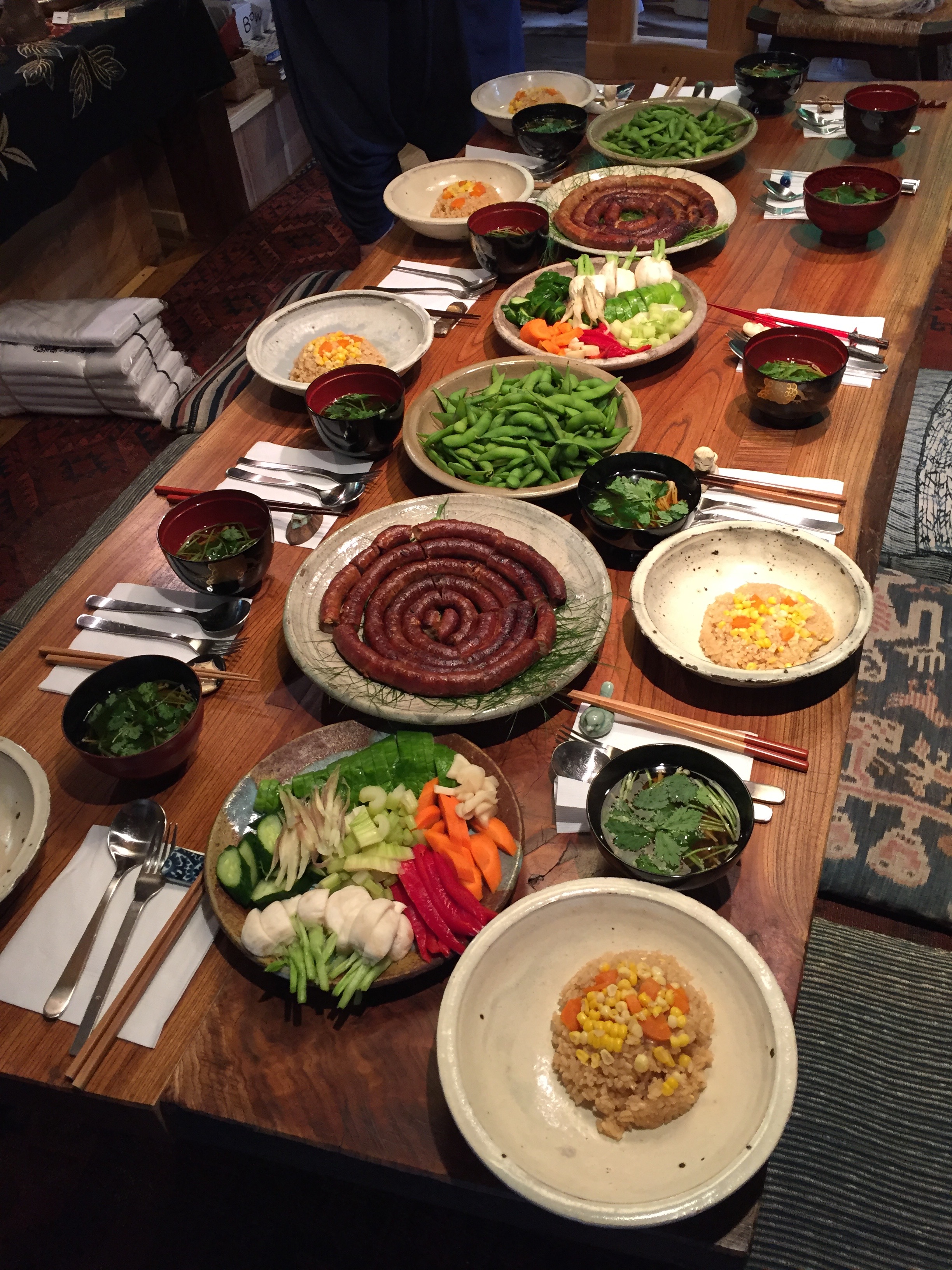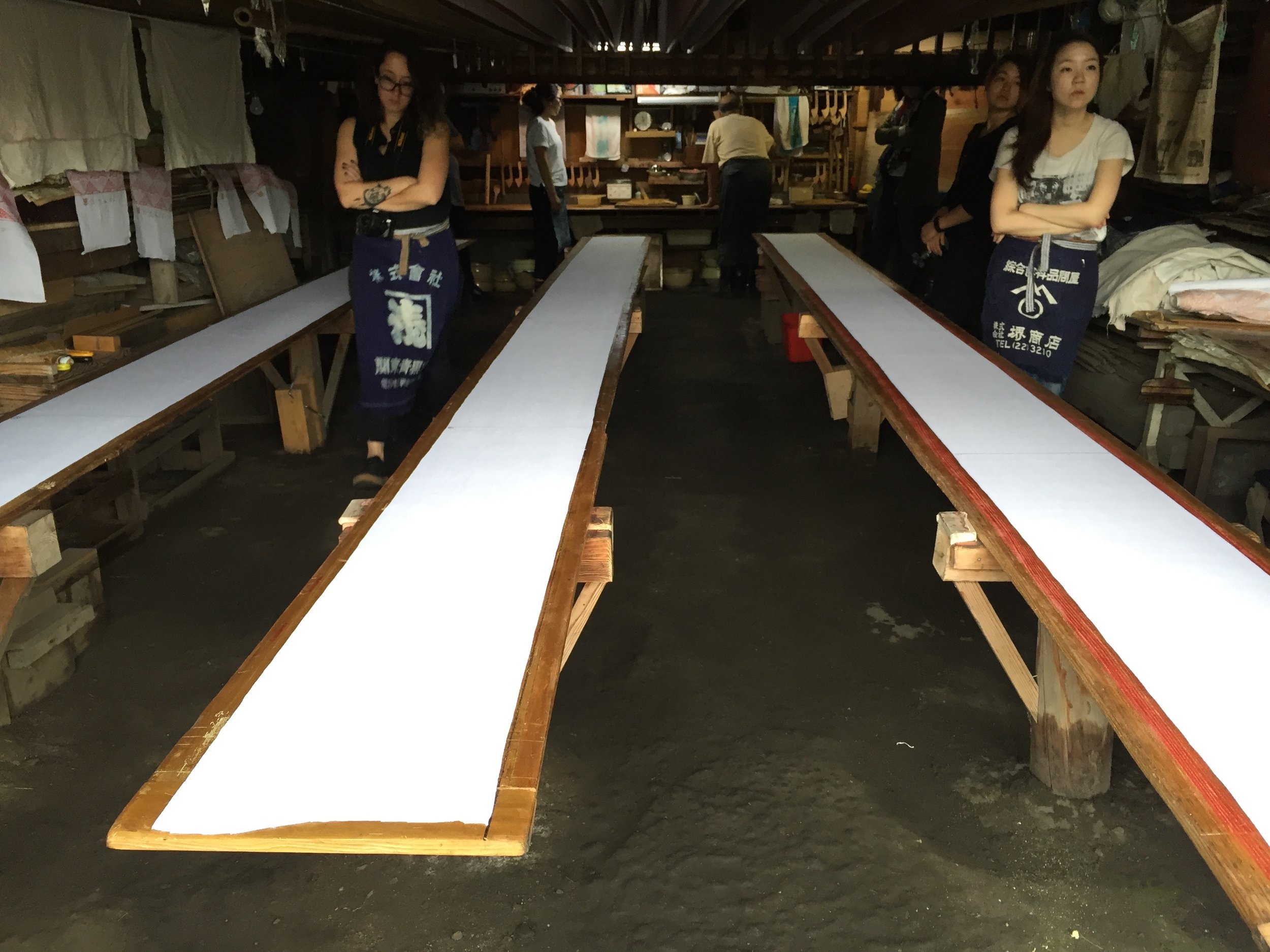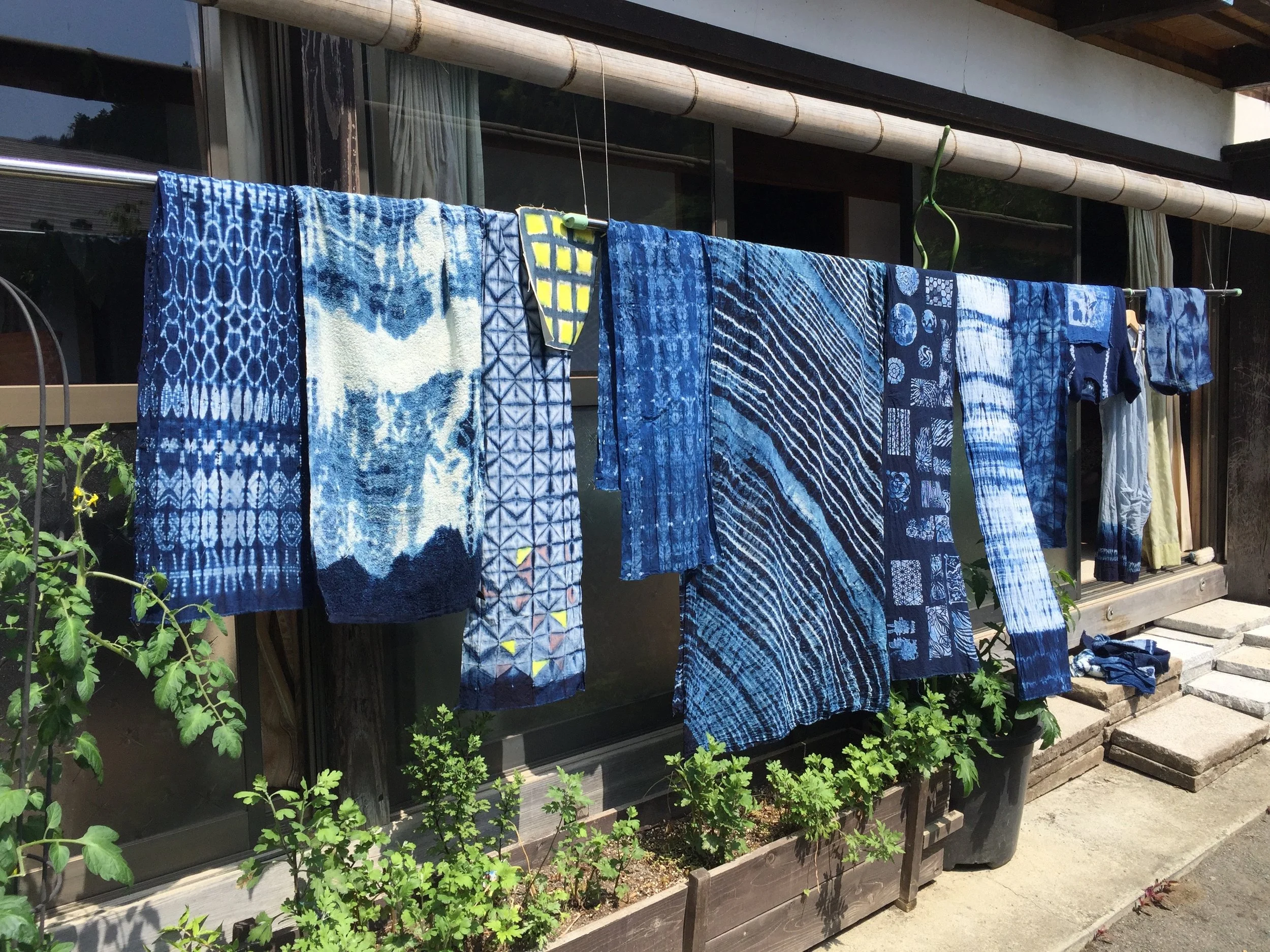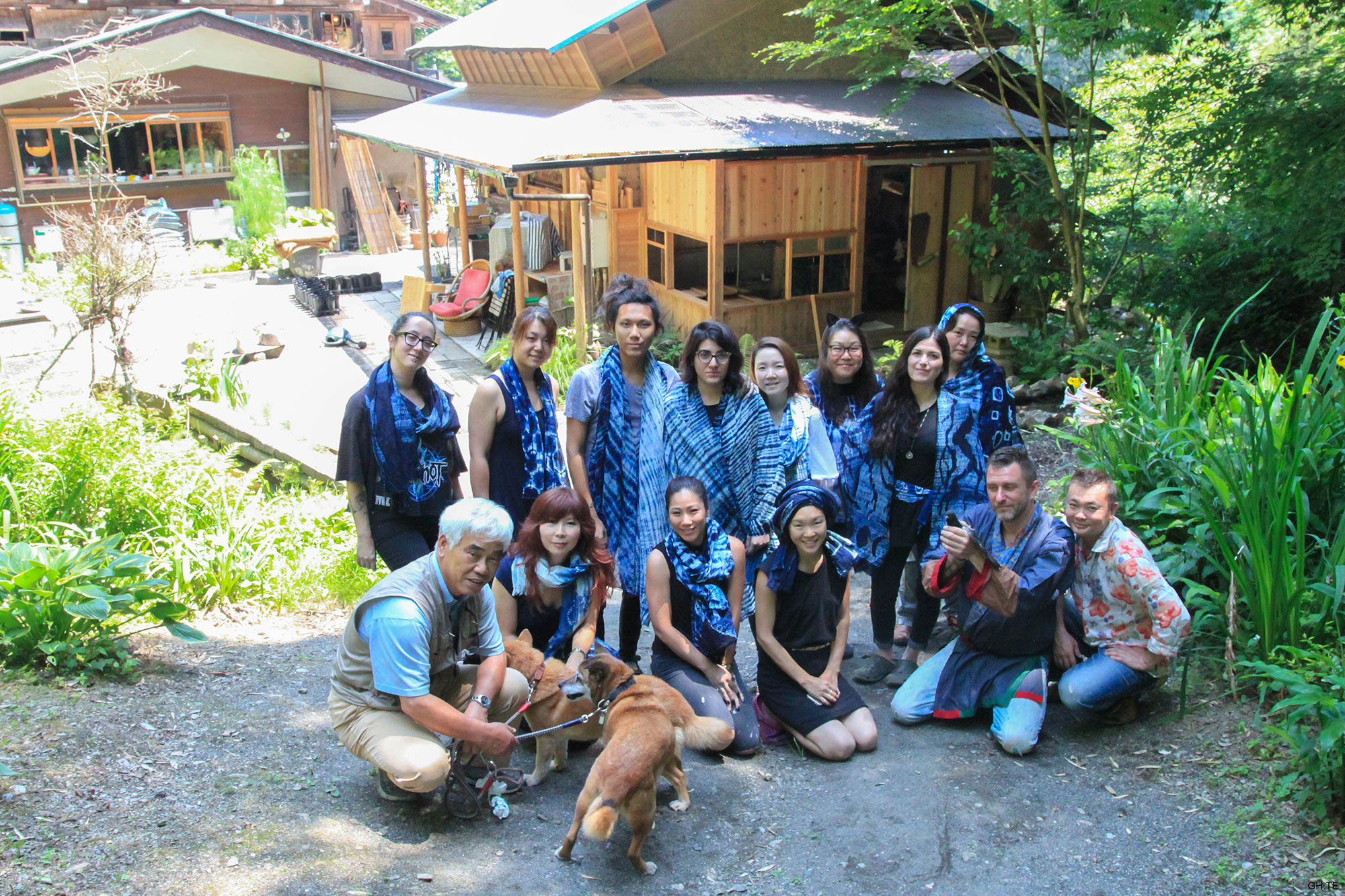Indigo Dye Camp: Fujino Japan
Below is a Q+A about my 2016 trip to Japan, with a group of Otis fashion school grads, to study heritage indigo dye and textile design. This interview was done with Lizzy Okoro of Bunch Magazine in Los Angeles, and was originally intended as a story for their print edition. Lizzy moved on from Bunch to co-found Here Now Us before the interview could go to print.
10 of us traveled to Tokyo, and took a train with our host and teacher Bryan Whitehead to his property an hour away in the countryside. The trip was organized by Otis professor Sumi Lee - a devoted student of Bryan's. It was an intimate trip of creative personalities, learning, and hand work. Bryan taught us about the history of indigo, and introduced us to artisans and National Treasures who keep the intricate traditions alive. From ceramics, to Katazome printing, to basket weaving, and Sashiko hand stitching, each day was dedicated to familiarizing us with heritage techniques.
Q: What prompted your trip? :
A: I always loved my Grandpa's tools from the 1940's and 50's. He was a farmer, draftsman and furniture designer. Sadly he passed away last year in 2015 at the age of 97. He always told me stories of his parents who immigrated from Japan, encouraged me to travel to there, and to follow my dreams of working in design. When I got offered this trip to do just that, I jumped on it! I knew it would put me in touch with my roots and the world my family came from.
Q: Please describe your experience on the trip:
A: The first thing we did after arriving in Fujino as a group was walk down to a nearby farmhouse owned by a carpenter. He was dismantling his 300 year old family home to build a new one. We helped our host Bryan salvage doors and other parts for repurposing at his own farmhouse. As we were getting ready to walk back, the carpenter pulled out family photo albums and showed us the pages of his family history. Black and white photos of his mother and aunts as children in kimono, his dad as and grandfather decades ago.
Walking in Fujino, Japan. Photo by Grace Hsieh
This trip was full of firsts. We stayed on a mountain hillside filled with tea farms, and generations old silkworm farm houses. Bryan bought and restored his farmhouse 30 years ago, and has been updating it ever since. He filled our minds with history, stories, and possibilities. And showed us how the artisans of Japan work, through the deep appreciation of his adopted culture (he's a Canadian by birth and Japanese in spirit).
We spent hours practicing sewing techniques and dyeing them at the 30 gallon indigo vats that sit just outside the farmhouse entrance. We ate delicious meals cooked by our other host Hiro who grilled and prepared dishes from his backyard garden.
Dinner at Bryan's farmhouse, cooked by Hiro.
Homeowrk and stitching in preparation for dyeing
30 Galon indigo vats outside the farmhouse
Sharing a room with someone who started out as a complete stranger, and living in pretty close quarters with the workshop group was intense. We spent all day from 730am breakfast, afternoon field trips, until 11pm or later most nights working on indigo sewing projects. But the forced intimacy made us close as the layers peeled away.
One night during a quiet work session when we were all catching up on hand sewing, screams erupted from the dining room. I ran in to see what was happening, and that's when I looked down to see the most enormous black and red centipede running across the carpet. It was thick, jointed, and least 8 inches long. Bryan hacked it in half with a long bladed kitchen knife right on the carpet! But were soon screaming again as the two halves continued running around. He managed to pick them up with chopsticks, and put them in a chocolate box, but didn't close the box fast enough before half the centipede hopped out and back onto the floor. We were all a but jumpy even after it was thrown into the outdoor fire.
Q: What makes this destination a must visit for creatives?
A: It was like hitting a restart button for my creative mind. Between the hand work, lessons, and environment, all of my senses were stimulated and awoken. If you love to hot tub in the middle of the mountains, hike in tea farms, eat homemade Japanese food, meet fellow creatives, and work with master craftspeople....
I've worked with silk for years and it was only on his trip I finally got to see silkworms. We fed, and watched them get fat eating mulberry leaves. They are little beasts that grow insanely quickly. Getting to work with silk cocoons, and seeing how silk goes from thread to yarn to the indigo vat connected all the steps.
Beginning of silk worms lives, and their mulberry leaf food.
Katazome resist prints used with indigo over dye. Photo by Grace Hsieh
Q: List an experience you had on this trip that impacted your creativity?
A: The appreciation of crafts runs very deep in Japanese culture. We had the opportunity to visit and work with a 7th generation craftsman, and National Treasure, named Noguchi-san. At 76 years of age he carries on the tradition printing kimono and dyeing them with in-ground indigo vats. His dedication to craftsmanship was something to behold as he hoisted and lowered the heavy 13 ft oak boards used to print kimono from ceiling racks to work benches. Stepping into that world brought new meaning and confidence to what I do as an artist in LA.
Long boards used for printing on Kimono panels before dyeing in indigo
Q: Anything else you would like to share about your experience:
A: On the second morning of our trip we met outside of a hotel in Tokyo, ready to start a day filled with museums. A violent raven attack stopped us in our tracks --it had a pigeon in its grips, and we watched a life and death struggle. As we stared completely frozen, the only person with his wits about him ran in and grabbed the pigeon right out of the crows claws. The crow eyed Bryan angrily as he protected the pigeon. We were all dumbfounded. He put the pigeon safely in a box with some water and food and we spent the day out wondering if the bloodied injured bird would live. At the end of the day we returned to find him clinging to life! Sidewalk the bird joined us on our journey from Tokyo to the farm in Fujino. He became our mascot, survived a badly needed leg amputation, and started to heal from his injuries.
Q: Please list between 4-10 must visit locations (restaurants, landmarks, museums, galleries, etc) with a one or two sentence description. If you have corresponding photos please list the image number next to the text.
A: Japanese Textile Workshop in Fujino for his lessons, and for the field trips he took us on - ceramicists, kimono printer, basket weaving. Bryan is an artisnal super hero.
At the end of two weeks all of the dye techniques we learned
Shopping artisnal ceramics in Fujino, Japan. Photo by Grace Hsieh
Bamboo basket weaving demo. Photo by Grace Hsieh
Tokyu Hands: There are a couple of these stores, and my favorite one is in Harajuku (in Tokyo). It's a multi level department store with everything from kitchen gear to crafting supplies. There are half floors, each floor is themed, and all are impeccably curated.
Issey miyake exhibit: I just saw that the exhibit is now closed, you can see a teaser video of the exhibit here, and get the book from the exhibit here. Fingers crossed that the exhibit will come to the states. It was life changing for me to see.
Kapital Denim in Tokyo: When I was in Japan, my friend sent me a piece David Sedaris wrote for the New Yorker about what it's like to shop at Kapital Denim. It's hilarious, and I could never explain it better than him.
Amuse Museum in Tokyo for the Boro exhibit. I had seen photos of Boro before going to Japan, but didnt fully grasp the significance of it before going to this museum - it has beautiful stories of textiles handed down through generations, and intricate examples of them.
Amuse Boro Museum in Tokyo
Entrance to Kapital Denim in Tokyo
Ukai - Toriyama restaurant in Hachioji
Ukai - Toriyama in Hachioji: This restaurant complex is the size of a small village with multiple structures, and koi ponds. Some of the buildings are authentic and have been transported from other parts of the country, and there is a small museum in one of the houses that recreates a family home from the Edo period. After a multi course meal in a private room, all of the lights went out at 8pm, and we watched the release and dance of flickering fire flies in the woods.
Our indigo dye camp group with Sumi (left kneeling), Bryan (holding pigeon), and Hiro (far right). Photo by Grace Hsieh
Thanks to fellow indigo student Grace Hsieh for sharing her photos with me for this post! Appreciate your beautiful pictures, and photo skills :)















